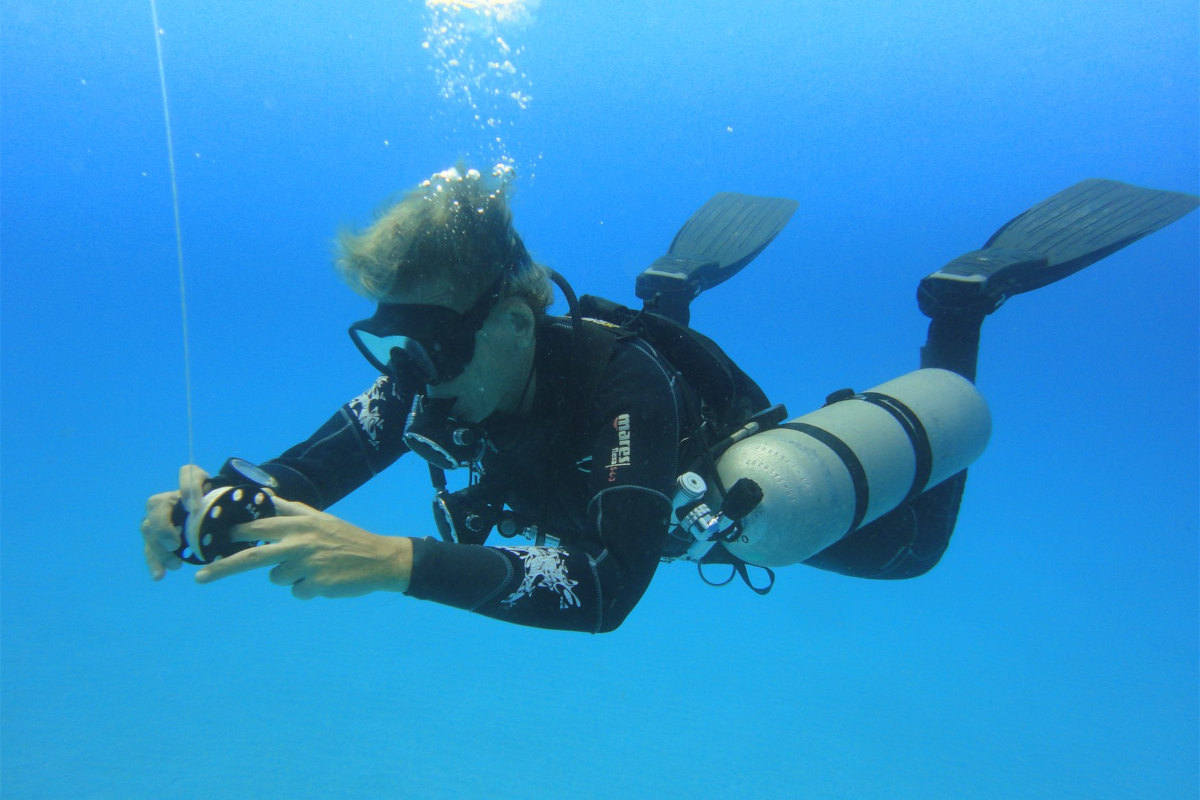Buoyancy is a fundamental concept in diving that significantly impacts your ability to control your position and movement underwater.
Mastering buoyancy can enhance your diving experience, improve safety, and protect the marine environment.
This comprehensive guide delves into the science of buoyancy, explaining its principles, the techniques for achieving perfect buoyancy control, and the benefits of mastering this essential skill.
Introduction to buoyancy in diving
Buoyancy refers to the ability of an object to float or sink in a fluid.
In diving, buoyancy control is crucial for maintaining a stable position in the water, conserving energy, and enjoying a safe and comfortable dive.
Proper buoyancy control allows divers to hover effortlessly, ascend and descend smoothly, and avoid contact with the seabed and marine life.
Mastering buoyancy is a key skill that distinguishes skilled divers from beginners, and it enhances the overall diving experience.
The physics of buoyancy
Buoyancy is governed by Archimedes’ principle, which states that an object submerged in a fluid experiences an upward force equal to the weight of the fluid displaced by the object. This principle explains why objects float, sink, or remain neutrally buoyant in water.
The buoyant force acting on a diver depends on the diver’s volume, the density of the water, and the weight of the diver and their equipment.
Understanding these factors is essential for achieving and maintaining proper buoyancy control during a dive.
Archimedes’ principle
Archimedes’ principle is the foundation of buoyancy.
It states that an object submerged in a fluid is buoyed up by a force equal to the weight of the fluid displaced by the object.
For divers, this means that the more water they displace, the greater the buoyant force acting on them.
By adjusting their volume (through the use of buoyancy control devices) and their weight (through weights and equipment), divers can control their buoyancy.
Factors affecting buoyancy
Several factors affect a diver’s buoyancy, including body composition, the type of exposure suit worn (wetsuit or drysuit), and the equipment carried.
Additionally, the salinity and temperature of the water can influence buoyancy.
Saltwater is denser than freshwater, providing more buoyant force, while colder water is denser than warmer water.
Divers must account for these variables to achieve and maintain proper buoyancy control.
Types of buoyancy
There are three primary types of buoyancy that divers need to understand: positive buoyancy, negative buoyancy, and neutral buoyancy. Each type plays a crucial role in different phases of a dive and mastering them is essential for safe and effective diving.
Positive buoyancy
Positive buoyancy occurs when the buoyant force is greater than the diver’s weight, causing the diver to float.
This type of buoyancy is useful when divers are at the surface, allowing them to rest and conserve energy. Achieving positive buoyancy can be done by inflating the buoyancy control device (BCD) or drysuit.
Negative buoyancy
Negative buoyancy occurs when the diver’s weight is greater than the buoyant force, causing the diver to sink.
This type of buoyancy is important during the initial descent and when needing to stay close to the seabed for specific tasks. Divers achieve negative buoyancy by deflating their BCD or using weights.
Neutral buoyancy
Neutral buoyancy is the ideal state where the diver’s weight equals the buoyant force, allowing them to hover effortlessly at a given depth.
Achieving neutral buoyancy is crucial for minimizing physical exertion, reducing air consumption, and avoiding accidental contact with the environment.
It requires fine-tuning buoyancy control through careful adjustment of the BCD and breathing techniques.
Equipment for buoyancy control
Several pieces of equipment are essential for effective buoyancy control.
These include the buoyancy control device (BCD), weights, and exposure suits. Each piece of equipment plays a specific role in helping divers achieve and maintain the desired buoyancy.
Buoyancy control device (BCD)
The BCD is a crucial piece of equipment that allows divers to adjust their buoyancy by inflating or deflating air bladders.
It also serves as a harness for securing the tank and other gear.
Modern BCDs come with features such as integrated weight systems, multiple air dumps, and adjustable straps for a comfortable fit.
Weights
Weights are used to counteract the positive buoyancy of the diver and their equipment. They are typically placed in integrated weight pockets on the BCD or worn on a weight belt. The amount of weight needed varies based on factors such as body composition, exposure suit thickness, and the type of water (saltwater or freshwater).
Exposure suits
Exposure suits, including wetsuits and drysuits, provide thermal protection and buoyancy.
Wetsuits are made of neoprene, which traps a layer of water between the suit and the skin, providing insulation.
Drysuits keep the diver dry by using a watertight seal and can be inflated with air to adjust buoyancy.
The type and thickness of the exposure suit impact buoyancy and must be considered when planning a dive.
YOU CAN ALSO READ: Buoyancy in diving: mastering the water with grace and respect
Techniques for achieving neutral buoyancy
Achieving neutral buoyancy requires practice and the application of specific techniques. These techniques involve using the BCD, adjusting weights, and fine-tuning breathing to maintain a stable position in the water.
Using the BCD
The BCD is the primary tool for adjusting buoyancy.
To achieve neutral buoyancy, divers add small amounts of air to the BCD during descent and release air during ascent.
The key is to make gradual adjustments to avoid sudden changes in buoyancy.
Divers should practice using the inflator and deflator buttons to become proficient in controlling their buoyancy.
Adjusting weights
Proper weighting is essential for achieving neutral buoyancy.
Divers should conduct a buoyancy check before each dive to ensure they have the correct amount of weight.
This involves floating at eye level with an empty BCD and holding a normal breath. The diver should sink slowly when exhaling.
Adjustments can be made by adding or removing small amounts of weight.
Fine-tuning breathing
Breathing plays a significant role in buoyancy control.
By taking slow, deep breaths, divers can make subtle adjustments to their buoyancy. Inhaling increases buoyancy, while exhaling decreases it.
Practicing controlled breathing helps divers maintain a steady position in the water and reduces the need for constant adjustments to the BCD.
The role of breathing in buoyancy control
Breathing is a powerful tool for fine-tuning buoyancy.
Mastering the art of controlled breathing can help divers maintain neutral buoyancy with minimal effort.
This section explores the techniques and benefits of using breathing for buoyancy control.
Controlled breathing techniques
Controlled breathing involves taking slow, deep breaths and avoiding rapid, shallow breathing.
Divers should focus on a relaxed breathing pattern, inhaling slowly through the nose and exhaling gently through the mouth.
This method helps maintain buoyancy and conserves air. Practicing controlled breathing on the surface can improve underwater buoyancy control.
Benefits of proper breathing
Proper breathing not only aids in buoyancy control but also enhances overall diving experience.
It reduces physical exertion, conserves air, and promotes relaxation.
By maintaining a calm and controlled breathing pattern, divers can extend their bottom time and enjoy a more comfortable dive.
Practicing breathing exercises
Divers can improve their buoyancy control by practicing breathing exercises.
One effective exercise is to lie flat in a pool and focus on maintaining a consistent breathing pattern.
Another exercise is to hover in the water column and use breathing to make small adjustments in buoyancy. Regular practice helps develop muscle memory and improves overall buoyancy control.
Common buoyancy challenges and solutions
Divers often encounter challenges when trying to achieve and maintain proper buoyancy. This section addresses some common issues and provides solutions to help divers overcome these challenges.
Overweighting and underweighting
One of the most common buoyancy challenges is incorrect weighting.
Overweighting can cause divers to sink too quickly and struggle to maintain neutral buoyancy.
Underweighting can make it difficult to descend and stay at depth.
To solve this, divers should conduct a buoyancy check before each dive and adjust their weights accordingly.
Maintaining buoyancy during ascent and descent
Maintaining buoyancy during ascent and descent can be challenging, especially for new divers.
Rapid changes in depth can cause sudden shifts in buoyancy. To address this, divers should ascend and descend slowly, making gradual adjustments to the BCD.
Practicing controlled breathing also helps stabilize buoyancy during these phases.
Dealing with Changing Conditions
Changing conditions, such as currents and varying water densities, can affect buoyancy. Divers should be aware of these factors and adjust their buoyancy control techniques accordingly.
For example, diving in colder water may require more weight due to increased water density. Staying alert and making small adjustments can help manage buoyancy in changing conditions.
Environmental benefits of proper Buoyancy Control
Proper buoyancy control has significant environmental benefits.
It helps protect marine ecosystems by preventing physical damage to coral reefs and other delicate habitats.
This section discusses the environmental impact of buoyancy control and how divers can contribute to conservation efforts.
Preventing damage to coral reefs
Accidental contact with coral reefs can cause significant damage.
Proper buoyancy control allows divers to avoid touching or kicking corals, preserving their health and integrity.
Divers should practice good buoyancy skills to minimize their impact on these fragile ecosystems.
Reducing sediment disturbance
Kicking up sediment can smother marine life and reduce visibility.
Good buoyancy control helps divers maintain a position above the seabed, reducing the risk of disturbing sediment.
This practice is especially important in areas with delicate seagrass beds and sandy bottoms.
Promoting marine conservation
By practicing proper buoyancy control, divers set a positive example for others and promote marine conservation.
Educating fellow divers about the importance of buoyancy can help protect marine environments and ensure sustainable diving practices.
Divers who demonstrate good buoyancy skills contribute to the preservation of underwater ecosystems.
Advanced buoyancy skills for technical diving
Technical diving requires advanced buoyancy skills due to the complexity and depth of the dives.
This section explores the additional buoyancy challenges faced by technical divers and the techniques used to address them.
Managing multiple tanks
Technical divers often carry multiple tanks, which can affect buoyancy.
Proper weighting and distribution of tanks are essential for maintaining balance and control. Technical divers must practice managing their equipment and adjusting their buoyancy to accommodate the additional weight.
Decompression stops
Decompression stops are critical for preventing decompression sickness during deep dives.
Maintaining precise buoyancy at specific depths is essential for effective decompression. Technical divers use advanced techniques, such as precise BCD adjustments and controlled breathing, to remain stable during decompression stops.
YOU CAN ALSO READ: The science behind decompression: what divers need to understand
Using trimix and other gases
Technical divers may use different gas mixtures, such as trimix, which can affect buoyancy.
Understanding the properties of these gases and how they impact buoyancy is crucial for planning and executing technical dives.
Technical divers must adjust their buoyancy control techniques to account for the use of specialized gases.
Training and courses for buoyancy mastery
Achieving mastery in buoyancy control requires proper training and practice.
This section highlights the available courses and training programs that can help divers develop their buoyancy skills.
Technical Diving Courses
Technical diving courses, such as those offered by Pluto Dive, provide specialized training in buoyancy control for technical dives.
These courses cover advanced techniques for managing multiple tanks, conducting decompression stops, and using different gas mixtures.
Technical diving courses are essential for divers looking to expand their skills and explore deeper and more challenging dive sites.
DISCOVER OUR TECHNICAL COURSES
Conclusion: the path to perfect buoyancy
Mastering buoyancy is a journey that enhances the diving experience, improves safety, and protects marine environments.
By understanding the science of buoyancy, using the right equipment, and practicing specific techniques, divers can achieve perfect buoyancy control.
Whether you are a recreational diver or a technical diver, investing in buoyancy training and practicing regularly will help you become a more skilled and confident diver.



